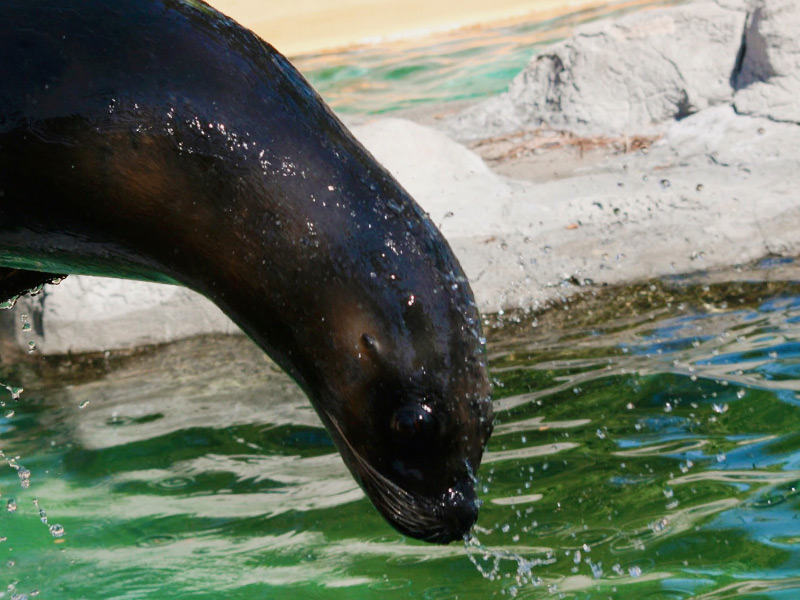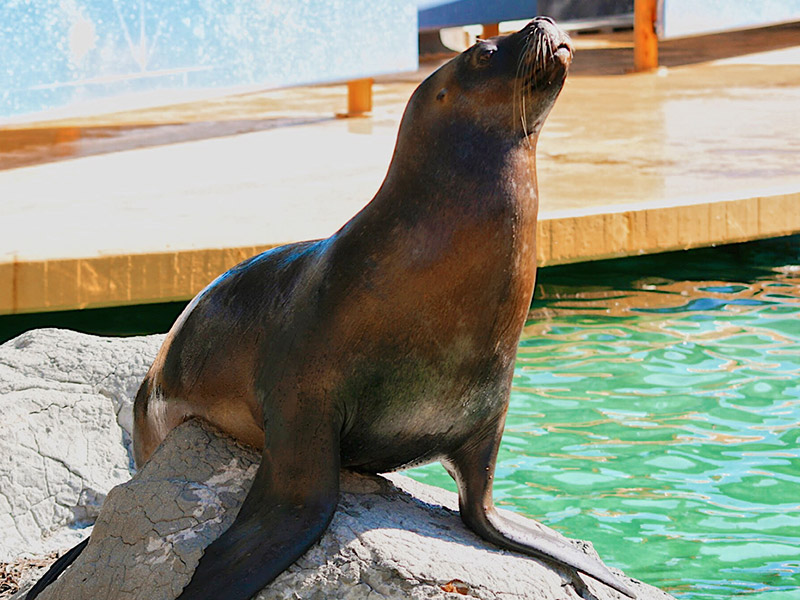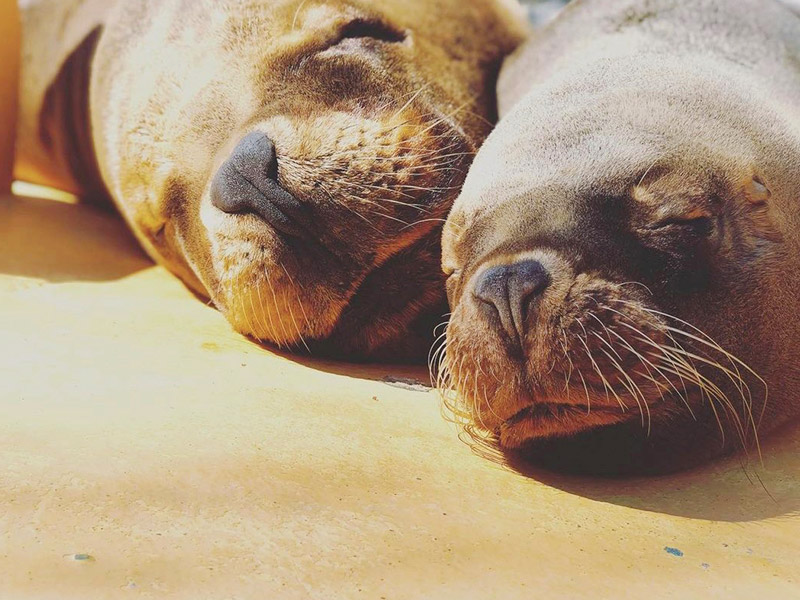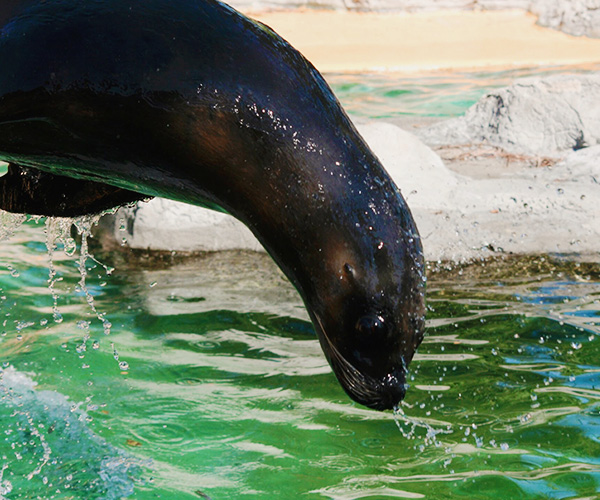The Patagonian sea lion belongs to the Order Carnivora, the pinniped family. A family that has been able to adapt to exploit the marine environment, and are even able to sleep in the water.
Among the characteristics of this species are their hydrodynamic shape and limbs, converted into fins. In addition, they have hair and a thick layer of fat that helps them regulate body temperature. They are animals that have sexual dimorphism, since males are larger than females.
Unlike seals, they have ears and their insertion from the femur to the hip is different, so sea lions can move on all fours, in quadrupedal position, while seals move by crawling. The way they swim is also different, as seals propel themselves with their hind flippers while sea lions do it with their front flippers. In addition, seals have nails on both hind and forelimbs, while sea lions only have nails on the hind limbs.
Although they can spend long periods at sea, during the breeding season they return to land to mate and give birth to their young. Social organization at this time of the year is based on harems (one male, several females).
The males fight for their territory: the strongest sea lion will protect the group of females and their offspring from predators and other competing males. As for the pups, once they are born, their growth is rapid (in two months, they are already moving into the sea).





















